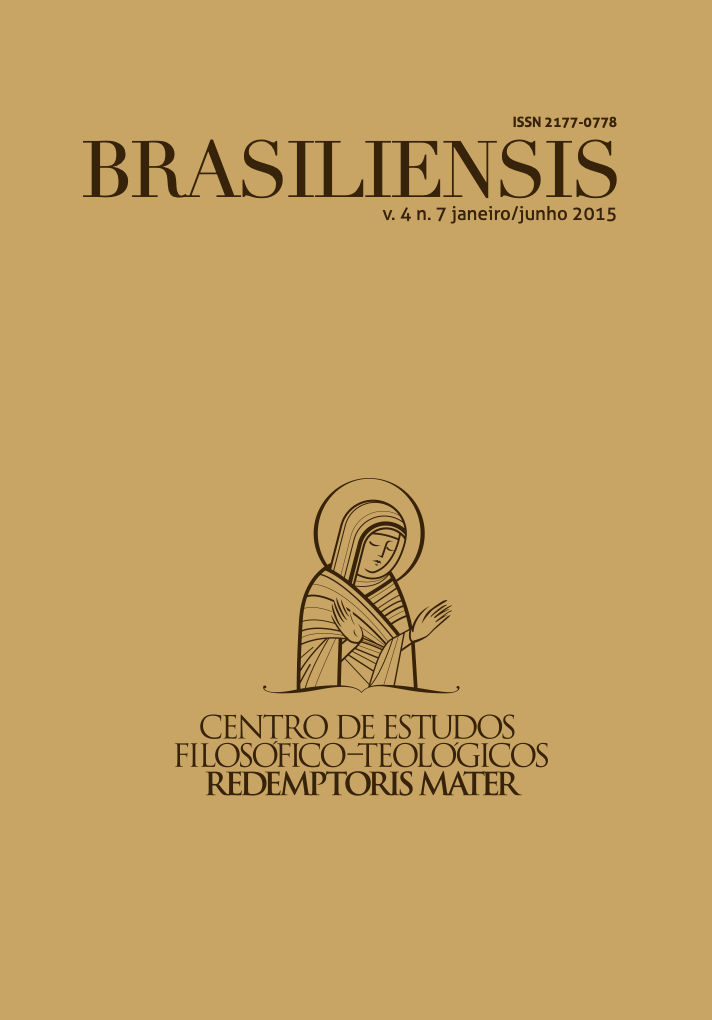Teaching the vernacular in priestly formation for a culture of encounter
Main Article Content
Abstract
It describes the challenge of training practice, with regard to the teaching of vernacular to priesthood candidates, in the light of linguistic studies contributions for education and recommendations of Church’s Magisterium for priestly training. In order to do so, we will present the vision of language that guides the practice, a brief historical description of the Portuguese language situation in Brazil. A discussion of the school’s role in teaching the vernacular, what guides the Church concerning the formation of seminarians to become future priests with missionary spirit, open to the culture of encouter. And, eventually, a description of the practice we have been adopting in the past four years in response to these demands. We realized that adopting a linguistic position open to cultural diversity, taking account of, therefore, the Church guides for priestly training, a pattern language learning process as a tool for a more formal written and oral expression helps them feel valued in their mother language, preparing them for the task of meeting the different. We conclude that the knowledge of one’s own language with its variations, as well as other foreign languages are ways for a capacity of adjustment and meeting the other.
Article Details

This work is licensed under a Creative Commons Attribution-NonCommercial-NoDerivatives 4.0 International License.
The Creative Commons Attribution (CC BY) license is the most permissive Creative Commons license. It allows others to distribute, remix, adapt, and build upon your work, even for commercial purposes, as long as they give you credit for the original creation.
How to Cite
References
ALMEIDA, Jaqueline Marinho Pinheiro de. Estruturas de relativização no Português do Brasil. Dissertação de Mestrado. Brasília: UnB, 2011, p. 15.
BAGNO, Marcos. Preconceito Linguístico: o que é, como se faz. 52. ed. São Paulo: Loyola, 2009. p. 26-35.
BORTONI-RICARDO, Stella Maris. Nós Cheguemu na Escola, e Agora? Sociolinguística e Educação. São Paulo: Parábola Editorial, 2005. p. 206.
CASTILHO, Ataliba Teixeira de (Coordenação geral), KATO, Mary e NASCIMENTO, Milton do (orgs.). Gramática do Português Culto Falado no Brasil: A Construção da Sentença. Campinas: Unicamp, 2009. v.3.
CASTILHO, Ataliba Teixeira de. Nova Gramática do Português Brasileiro. São Paulo: Contexto, 2010.
CODA, Piero. “La fede stessa è cultura”. In REALI, Nicolau; ALBERTI, Gabriel Richi (Ed.). Cristo Nuova Creatura. Roma: Pul Mursia, 2001. p. 51-60.
CONCÍLIO VATICANO, 2, 1962-1965. Decreto Optatam totius sobre a formação sacerdotal, 15. In: _____. Vaticano II: mensagens, discursos, documentos. 2. ed. São Paulo: Paulinas, 2007. p. 323.
______. Decreto Presbyteorum ordinis, 19. In: _____. Vaticano II: mensagens, discursos, documentos. 2. ed. São Paulo: Paulinas, 2007. p. 466.
______. Constituição Dogmática Lumen Gentium, 10. In: _____. Vaticano II: mensagens, discursos, documentos. 2. ed. São Paulo: Paulinas, 2007. p. 194.
______. Constituição Pastoral Gaudium et Spes, 62. In: _____. Vaticano II: mensagens, discursos, documentos. 2. ed. São Paulo: Paulinas, 2007. p. 522.
CONFERÊNCIA DO EPISCOPADO LATINO-AMERICANO E DO CARIBE (CELAM). Documento de Aparecida: Texto conclusivo da V Conferência do Episcopado Latino-Americano e do Caribe, 193. São Paulo: Paulus, 2007. p. 96.
CONFERÊNCIA NACIONAL DOS BISPOS DO BRASIL (CNBB). Diretrizes para a Formação dos Presbíteros da Igreja no Brasil, n. 134. 2. ed. Brasília: CNBB, 2013. [Documentos da CNBB, n.93]. p. 68-69.
CONGREGAÇÃO PARA A EDUCAÇÃO CATÓLICA. Ratio Fundamentalis Instituitionis Sacerdotalis, 67, 1965. Disponível em: http://www.vatican.va/roman_curia/ congregations/ccatheduc/documents/rc_con_ccatheduc_doc_19850319_ ratio-fundamentalis_it.html. Acesso em 01 fev. 2015.
COUTINHO, Afrânio. Notas de Teoria Literária. Rio de Janeiro: Civilização brasileira. p. 56.
DALPIAZ, Cássio. A missionariedade eclesial como elemento (re)configurador das culturas: uma leitura da Lumen Gentium (n. 17). Monografia apresentada ao Centro de Estudos Filosófico-Teológicos Redemptoris Mater como requisito parcial para a obtenção do grau de Bacharel em Teologia. Brasília, 2013.
GUEDES, Paulo Coimbra. Da redação escolar ao texto: um manual de redação. 3. ed. Porto Alegre: UFRGS, 2004. p. 13-23.
IGREJA CATÓLICA. Da formação dos clérigos. In: _____. Código de direito canônico. cân. 249. 3. ed. São Paulo: Loyola, 2003. p. 87.
NOLL, Volker. O Português Brasileiro: Formação e Contrastes. Traduzido do Alemão por Mário Eduardo Viaro. São Paulo: Globo, 2008. p. 183-218.
PAULO VI, Papa. Carta Encíclica Ecclesiam Suam sobre os caminhos da Igreja, 67. Disponível em: http://w2.vatican.va/content/paul-vi/pt/encyclicals/documents/hf_p-vi_enc_06081964_ecclesiam.html. Acesso em: 01 fev. 2015. PINKER, Steven. O Instinto da Linguagem: Como a Mente Cria a Linguagem. Tradução Cláudia Berliner. São Paulo: Martins Fontes, 2002. p. 9.
ROBERTS, Ian. Diachronic Syntax. New York: Oxford University Press Inc., 2007. p. 407.

